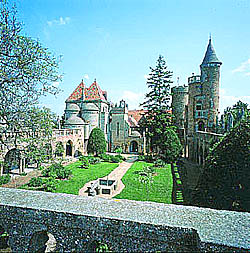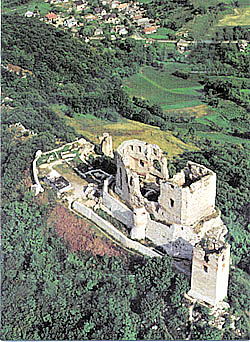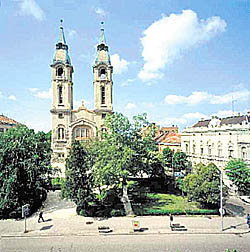Popular destinations nearby
Székesfehérvár,
Tata,
Tatabánya,
Bakonybél,
Dunaújváros,
Eplény,
Gárdony,
Komárom,
Pápa,
Várpalota,
Velence,
Zirc,
Ajka,
Alcsútdoboz,
Ászár
|
The region, which is homogeneous in its culture and rich in various natural beauties, is surrounded by the Danube and Lake Balaton and dominated by the Bakony hills.
Leaving the capital visitors can take the former Roman route going along the Danube or can even try water sports. In Dunaújváros you can go kayak-canoeing or rowing, while fishermen prefer the calm dead channels. Lake Velencei offers unique experiences for the lovers of swimming and sailing. In the north the region includes the Gerecse hills, the home of several rare bird species, and the Vértes hills, which bear the characteristics of a high mountain with their micro-climate, ravines and oak-forests. Going to the south, in Sárrét and Mezőföld you can see the typical landscape of the Great Hungarian Plain rarely broken by hills. The centre of the former region is Székesfehérvár. The one-time coronation town has preserved its valuable buildings: the Cathedral, the Episcopal Palace, the Orb or the flower clock still attract many visitors.
After the Turkish occupation Slovakian, Swabian and Serbian settlers arrived in the region. By now their culture has completely integrated into the Hungarian culture making it even richer. In the baroque devotional church of Péliföldszentkereszt the mass is given in several languages even today. The settlers have also contributed to the development of the industry here by establishing the famous porcelain factory of Herend or the glass works of Ajka.
The region offers various cultural programmes to its visitors: the Baroque Days of Pápa, the Jazz Festival of Neszmély, the Castle Days of Sümeg or the Beethoven concerts in Martonvásár all represent this colourful region. Lodgings in Central Transdanubia: Sights in Central Transdanubia:
|
Central Transdanubia map nagyítása >>
in Central Transdanubia:
|
|
|
Hungary - Central Transdanubia |
|
|
|
||
|
Sunday, 6. July 2025. - 01:18:16 |
||
 From the west, the region is bordered by Budapest, while in the north the Danube serves
as a natural parting-line, which divides even a town,
From the west, the region is bordered by Budapest, while in the north the Danube serves
as a natural parting-line, which divides even a town,
 The landscape is more varied from the Balaton Highlands to Bakonyalja ( foot of the Bakony hills): the region is divided by the hills of Bakony leading to the Marcali-basin and the Small Plain. In Bakony the people used to earn their living by animal breeding and wood processing, but the steep ravines, the drain-traps and the caves served as shelters, as well, where highwaymen could hide away from the Turkish invaders. It is not by chance that a system of border castles was built here from
The landscape is more varied from the Balaton Highlands to Bakonyalja ( foot of the Bakony hills): the region is divided by the hills of Bakony leading to the Marcali-basin and the Small Plain. In Bakony the people used to earn their living by animal breeding and wood processing, but the steep ravines, the drain-traps and the caves served as shelters, as well, where highwaymen could hide away from the Turkish invaders. It is not by chance that a system of border castles was built here from  Apart from the economy, the cultural life has also developed:
Apart from the economy, the cultural life has also developed: 